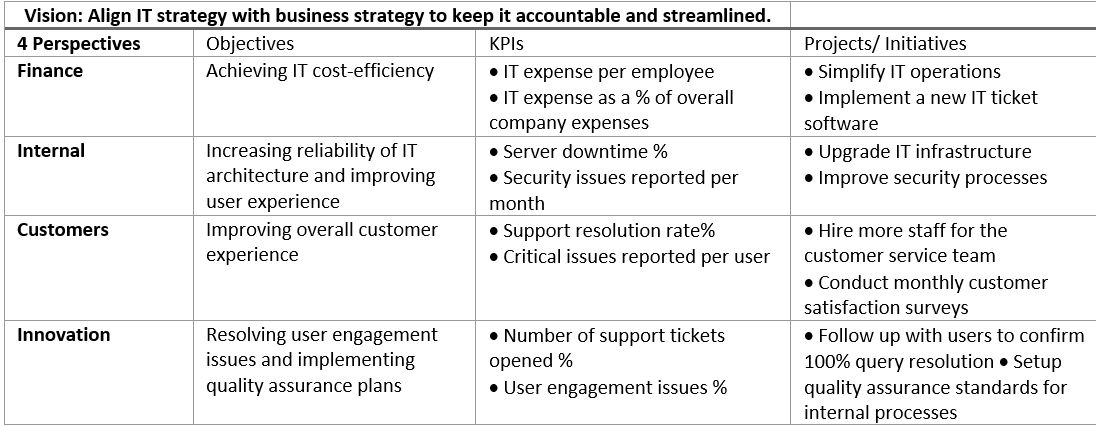- 1. What Is Goal Setting in Business?
- 2. Goal Setting Theory and Frameworks
- 3. How to Track and Measure Goals
- 4. SMART Goals: An Ultimate Guide With Examples
- 5. OKRs: The Ultimate Guide to Objectives and Key Results
- 6. What Is a Key Performance Indicator (KPI)?
- 7. What Is Management by Objectives (MBO)?
- 8. Goal Setting Templates
- 9. How to Achieve Goals and Ensure Success
- 10. Organizational Objectives: How to Set Them
- 11. Department Objectives: How to Set Them
- 12. How to Choose the Right Goal Setting Software
- 13. FAQ
- 1. What Is Goal Setting in Business?
- 2. Goal Setting Theory and Frameworks
- 3. How to Track and Measure Goals
- 4. SMART Goals: An Ultimate Guide With Examples
- 5. OKRs: The Ultimate Guide to Objectives and Key Results
- 6. What Is a Key Performance Indicator (KPI)?
- 7. What Is Management by Objectives (MBO)?
- 8. Goal Setting Templates
- 9. How to Achieve Goals and Ensure Success
- 10. Organizational Objectives: How to Set Them
- 11. Department Objectives: How to Set Them
- 12. How to Choose the Right Goal Setting Software
- 13. FAQ
What Is a Balanced Scorecard?
What Is a Balanced Scorecard in Project Management?
Different companies use varying performance measuring strategies. Managers choose the strategy that works best for their teams and specific business needs.
While some may use traditional financial measures like earnings-per-share (EPS) and return on investment (ROI), others may consider operational standards like operating cash flow or net profit margin.
But this gives rise to several questions:
- Why should companies use just one technique to track business progress?
- Is one performance tracking strategy better than the other?
- Which is the most efficient measure of performance?
The introduction of the balanced scorecard in project management answers these questions. Given the dynamic market environment, it’s essential that teams can view company performance from multiple important perspectives simultaneously.
In this article, we will define the balanced score card model, explore how it is used in project management, and share some examples. Before we begin, you can unlock a free trial with Wrike right away to boost your goal setting processes.
What is the balanced scorecard model?
The balanced scorecard model is a strategic management system that aligns the broad company vision to its business activities. It is a corporate strategy tool that tracks organizational performance against its overall goals to improve business outcomes.
David P. Norton and Robert S. Kaplan introduced the term “balanced scorecard” in their 1992 research on performance measurement.
After reviewing available performance techniques, they determined that non-financial metrics should also be included in reporting. They made the measure “balanced” by recommending:
- Alignment of business activities with the core corporate strategy
- Incorporation of non-financial measures such as learning and growth, customer metrics, and internal business processes
What is the purpose of a balanced scorecard?
The concept of the balanced scorecard was introduced to gain a holistic view of organizational performance.
Traditional performance measures focused exclusively on financial metrics. With the arrival of the balanced scorecard approach, non-financial elements were also incorporated into performance measures.
It has since evolved into a strategic methodology that connects company goals with KPIs to track performance and project teams. Organizations of all sizes and businesses use balanced scorecards (or BSCs) to:
- Align overall strategic objectives with operational activities
- Prioritize projects and initiatives
- Improve collaboration between stakeholders and get them on the same page
- Track organizational performance to ensure that it progresses as planned
What are the four perspectives of the balanced scorecard?
The four balanced scorecard perspectives provide a harmonized approach, as they include both backward-looking financial elements and forward-looking non-financial metrics. It provides a historical snapshot while also keeping an eye on future value-generating elements.
In the BSC, an organization is looked at from four different perspectives and objectives. KPIs and goals are developed for each one of them. The four perspectives are:
Financial
Organizational performance is reviewed from a financial perspective. Metrics such as revenue growth, earnings visibility, and related financial information are analyzed to understand the company’s economic performance.
Customer
Customer-related measures are assessed, such as the level of satisfaction with the company, its products, services, pricing, availability, and quality.
Metrics such as customer satisfaction score, the percentage increase in user base, and customer churn rate are reviewed to understand how customers interact and engage with the company.
Internal
The company's core competencies are reviewed to identify the company’s most important business processes.
Operational metrics are tracked to identify bottlenecks, wastage, or process delays. Some of these metrics can include cycle time and information systems efficiency rate.
Learning and growth
Organizations should constantly innovate and empower their employees to increase their market share. Pioneering metrics such as research and development expenses and the percentage of income spent on employee training are tracked to improve competitive advantage.
How the balanced scorecard impacts project management
With balanced scorecard project management, teams are able to review their projects by evaluating critical business from four areas in one report.
Every project is characterized by three key elements – complexity, unpredictability, and ambiguity. Various activities and processes are assigned to different team members and need to be monitored to achieve specified outcomes.
Introducing a balanced scorecard approach to project management can:
- Clarify the project vision, mission, and objectives
- Outline the expected project outcomes to cater to all four areas — customer, internal, financial, and learning and growth
- Identify meaningful performance indicators to track project progress
- Discover any potential project roadblocks and eliminate them
How to implement a balanced scorecard in project management
Deploying a balanced scorecard emphasizes project portfolio management, as projects or initiatives are critical to implementing the business strategy.
Teams can implement a balanced scorecard into project management using this step-by-step process:
- Make a list of all current projects
- Map the available projects to the balanced scorecard
- Discover gaps and add the relevant projects
- Remove the tasks that do not contribute to the achievement of business strategy
- Prioritize projects based on business vision or mission to start execution
Balanced scorecard example
Creating a balanced scorecard framework is a five-step process:
- Define the organizational mission, vision, and values for the project or business
- Outline the four strategic perspectives — financial, internal, customers, and learning and growth
- Establish the top-level strategic project objectives
- Set up the business goals and key performance indicators (KPIs) that will be used to track performance
- Finalize the team or department level action plans and initiatives
Here's a balanced scorecard example for an IT department optimization project:

How a balanced scorecard approach can help improve performance
Adopting the balanced scorecard approach can have a significant improvement on project performance. Studies show that the presence of a balanced scorecard adds a strategic dimension to project performance, such as:
- Aligning specific measures to expected outcomes to clarify project goals
- Setting up a link between corporate strategy and project vision
- Outlining key performance indicators (KPIs) to track project progress
- Incorporating the viewpoints of all relevant stakeholders, internal and external
- Breaking down overall strategic goals into actionable projects
Organizations often create and implement strategies in a disorganized fashion. The balanced scorecard method aims to make strategy a continuous process.
How to implement a balanced scorecard framework with Wrike
Implementing a balanced scorecard can revolutionize projects. Instead of getting distracted by new technology, ideas, or actions from your competitors, teams can stay focused on results.
Connecting a balanced scorecard with project management combines overall corporate strategy with tactical execution plans. Using advanced project management tools such as Wrike helps teams manage project planning, strategy, execution, and performance in one versatile platform.
Utilize Wrike’s advanced insights for data-driven forecasting, enable real-time collaboration, and manage business continuity in a single interactive dashboard. Get a free Wrike trial to implement a balanced scorecard framework and consistently deliver on-time and successful projects.


